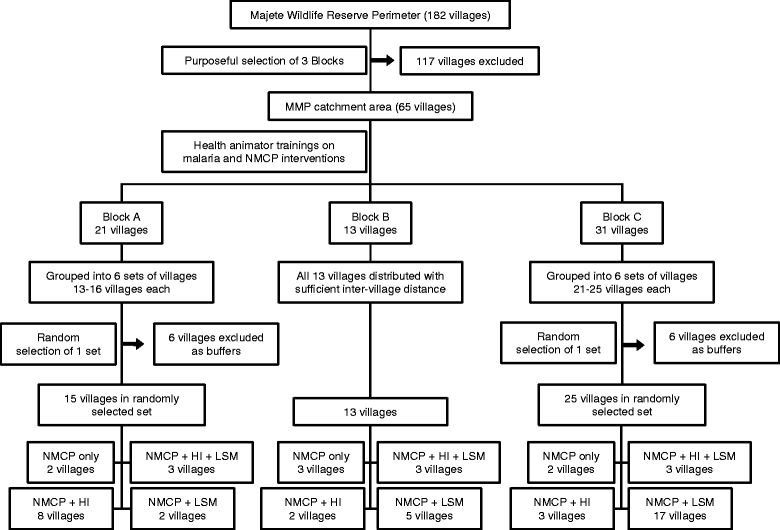Assessment of the effect of larval source management and house improvement on malaria transmission when added to standard malaria control strategies in southern Malawi: study protocol for a cluster-randomised controlled trial
- PMID: 28938876
- PMCID: PMC5610449
- DOI: 10.1186/s12879-017-2749-2
Assessment of the effect of larval source management and house improvement on malaria transmission when added to standard malaria control strategies in southern Malawi: study protocol for a cluster-randomised controlled trial
Abstract
Background: Due to outdoor and residual transmission and insecticide resistance, long-lasting insecticidal nets (LLINs) and indoor residual spraying (IRS) will be insufficient as stand-alone malaria vector control interventions in many settings as programmes shift toward malaria elimination. Combining additional vector control interventions as part of an integrated strategy would potentially overcome these challenges. Larval source management (LSM) and structural house improvements (HI) are appealing as additional components of an integrated vector management plan because of their long histories of use, evidence on effectiveness in appropriate settings, and unique modes of action compared to LLINs and IRS. Implementation of LSM and HI through a community-based approach could provide a path for rolling-out these interventions sustainably and on a large scale.
Methods/design: We will implement community-based LSM and HI, as additional interventions to the current national malaria control strategies, using a randomised block, 2 × 2 factorial, cluster-randomised design in rural, southern Malawi. These interventions will be continued for two years. The trial catchment area covers about 25,000 people living in 65 villages. Community participation is encouraged by training community volunteers as health animators, and supporting the organisation of village-level committees in collaboration with The Hunger Project, a non-governmental organisation. Household-level cross-sectional surveys, including parasitological and entomological sampling, will be conducted on a rolling, 2-monthly schedule to measure outcomes over two years (2016 to 2018). Coverage of LSM and HI will also be assessed throughout the trial area.
Discussion: Combining LSM and/or HI together with the interventions currently implemented by the Malawi National Malaria Control Programme is anticipated to reduce malaria transmission below the level reached by current interventions alone. Implementation of LSM and HI through a community-based approach provides an opportunity for optimum adaptation to the local ecological and social setting, and enhances the potential for sustainability.
Trial registration: Registered with The Pan African Clinical Trials Registry on 3 March 2016, trial number PACTR201604001501493.
Keywords: Anopheles mosquitoes; Community participation; House improvement; Integrated vector management; Larval source management; Malaria transmission; Vector control.
Conflict of interest statement
Competing interest
The authors declare that they have no competing interests.
Consent for publication
Not applicable.
Publisher’s Note
Springer Nature remains neutral with regard to jurisdictional claims in published maps and institutional affiliations.
Figures





References
-
- Lengeler C. Insecticide-treated bed nets and curtains for preventing malaria. Cochrane Db Syst Rev. 2004;(2):CD000363. - PubMed
Publication types
MeSH terms
Substances
Associated data
LinkOut - more resources
Full Text Sources
Other Literature Sources
Medical

